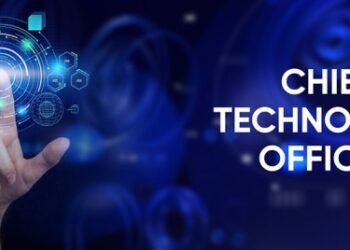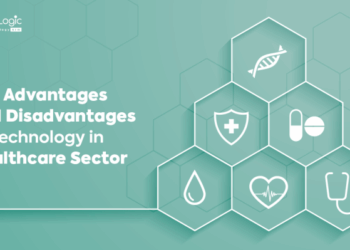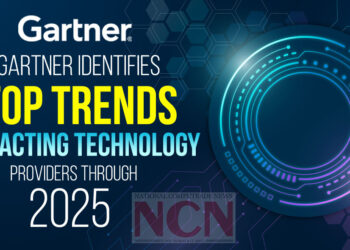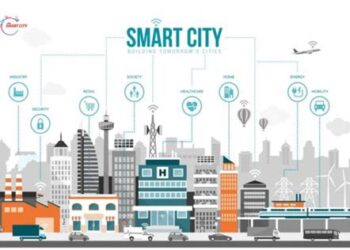Delving into How Smart Tech Is Reshaping Everyday Life Globally, this introduction immerses readers in a unique and compelling narrative. Smart technology has become ubiquitous, revolutionizing daily activities across the globe. From smart devices enhancing convenience to cutting-edge healthcare practices and the development of smart cities, the impact is profound.

Let's explore this fascinating transformation.
As we delve deeper, we uncover the intricate ways in which smart technology is influencing various aspects of our lives, from education to privacy concerns.
Impact of Smart Tech on Daily Life
Smart technology has revolutionized everyday activities on a global scale, making tasks more efficient, convenient, and interconnected. From smart home devices to wearable tech, the integration of technology into daily life has become increasingly prevalent.
Common Smart Devices in Households
- Smart thermostats: These devices regulate home temperature based on usage patterns, saving energy and optimizing comfort.
- Voice assistants: Virtual assistants like Amazon's Alexa or Google Assistant help with tasks, set reminders, and provide information through voice commands.
- Smart security cameras: These cameras offer real-time monitoring of homes, enhancing security and providing peace of mind to homeowners.
- Smart appliances: From refrigerators to washing machines, these appliances can be controlled remotely via smartphones, making household chores more manageable.
Advantages and Disadvantages of Smart Technology
- Advantages:
- Increased convenience: Smart devices automate tasks, saving time and effort for users.
- Improved efficiency: Automation and connectivity streamline processes, leading to more productivity.
- Enhanced connectivity: Smart technology enables seamless communication and integration between devices.
- Disadvantages:
- Privacy concerns: Smart devices collect data that may raise privacy issues if not properly secured.
- Dependency: Relying too heavily on smart technology may lead to difficulty performing tasks manually if the devices fail.
- Cost: Initial investment in smart devices can be expensive, and ongoing maintenance costs may add up over time.
Smart Tech in Healthcare
Smart technology has made significant strides in reshaping healthcare practices globally. From wearable devices to advanced monitoring systems, the integration of smart tech in healthcare has revolutionized the way patients are diagnosed, treated, and monitored.
Smart Devices for Monitoring Health and Wellness
- Wearable fitness trackers such as Fitbit and Apple Watch provide real-time data on heart rate, activity levels, and sleep patterns, allowing individuals to track their health metrics and make informed lifestyle choices.
- Remote patient monitoring devices enable healthcare providers to monitor patients with chronic conditions from a distance, reducing the need for frequent in-person visits and improving overall patient outcomes.
- Smart scales and blood pressure monitors can sync with mobile apps to provide users with instant feedback on their vital signs and progress towards health goals.
Benefits of Incorporating Smart Technology in Healthcare Settings
- Improved patient outcomes: Smart tech allows for continuous monitoring and early detection of health issues, leading to timely interventions and better treatment outcomes.
- Enhanced patient engagement: By empowering individuals to take control of their health through wearable devices and mobile apps, smart technology promotes active participation in healthcare decisions.
- Efficient healthcare delivery: Remote monitoring and telemedicine services enabled by smart tech help reduce healthcare costs, streamline processes, and make healthcare more accessible to underserved populations.
Smart Cities and Urban Development
Smart technology is revolutionizing the way cities are planned and developed on a global scale. By integrating various digital solutions and data-driven strategies, smart cities aim to improve efficiency, sustainability, and quality of life for residents.
Impact of Smart Technology on Urban Infrastructure
Smart technology is reshaping urban infrastructure by incorporating sensors, IoT devices, and real-time data analytics to optimize resources and services
. For example, smart traffic management systems can reduce congestion and improve traffic flow, leading to less pollution and shorter commute times.
Smart energy grids help monitor and optimize energy consumption, leading to cost savings and reduced environmental impact.
Examples of Smart City Initiatives
- Singapore's Smart Nation initiative focuses on leveraging technology to improve urban living, with projects like smart transportation, waste management, and healthcare.
- Barcelona has implemented smart sensors in public spaces to monitor air quality, noise levels, and waste management, leading to a cleaner and healthier environment for residents.
- In developing regions like Nairobi, Kenya, smart technology is being used to address challenges like water scarcity and inefficient public transportation systems, improving quality of life for citizens.
Comparison of Smart Cities in Developed vs. Developing Regions
In developed regions, smart cities often have more advanced infrastructure and greater access to resources, allowing for faster implementation of innovative technologies. On the other hand, developing regions face unique challenges like limited funding and technical expertise, but are leveraging smart solutions to leapfrog traditional development models and address pressing urban issues more efficiently.
Education and Smart Technology
Smart technology has revolutionized modern education systems worldwide, providing students with new tools and resources to enhance their learning experiences. By integrating smart devices and innovative technology in classrooms, educators are able to create dynamic and interactive learning environments that cater to the individual needs of students.
Role of Smart Technology in Education
- Smart technology allows for personalized learning experiences, catering to the unique learning styles and paces of individual students.
- Interactive smart boards and educational apps engage students in a more immersive and hands-on learning process.
- Virtual reality and augmented reality technology offer new ways to explore complex concepts and subjects in a more visual and interactive manner.
Challenges and Opportunities of Integrating Smart Technology in Classrooms
- Challenges: Resistance from educators who may be unfamiliar or uncomfortable with new technology, potential distractions from smart devices, and the need for adequate training and support for teachers.
- Opportunities: Improved student engagement and participation, enhanced collaboration among students, access to a vast array of educational resources online, and the ability to track student progress more effectively.
Privacy and Security Concerns
Personal data privacy has become a major concern with the increasing reliance on smart technology in everyday life. As smart devices collect vast amounts of data about users, there are growing concerns about how this data is being used and whether it is being adequately protected from unauthorized access.
Implications of Increased Reliance on Smart Technology for Personal Data Privacy
- The more smart devices we use, the more data is being collected about our habits, preferences, and behaviors.
- This data can be vulnerable to hacking and unauthorized access, leading to privacy breaches and potential misuse.
- Consumers are often unaware of the extent of data collection by smart devices and the ways in which their personal information is being shared or sold.
Cybersecurity Threats and Measures to Safeguard Smart Devices and Networks
- Cybersecurity threats, such as malware, phishing attacks, and ransomware, pose significant risks to the security of smart devices and networks.
- Measures to safeguard smart devices include regularly updating software, using strong passwords, and implementing encryption protocols.
- Network security measures, such as firewalls and intrusion detection systems, are essential to protect against external threats.
Ethical Dilemmas Surrounding the Collection and Use of Data by Smart Devices
- The ethical implications of collecting and using personal data without explicit consent raise concerns about individual autonomy and privacy rights.
- Companies must be transparent about their data collection practices and ensure that users have control over how their data is being used.
- There are ongoing debates about the balance between the benefits of data-driven services and the potential risks to personal privacy and security.
Summary
In conclusion, the discussion on How Smart Tech Is Reshaping Everyday Life Globally highlights the vast potential and challenges of integrating smart technology into our daily routines. As we navigate this rapidly evolving landscape, it's crucial to balance the benefits with the need for privacy and security.
Embracing smart tech wisely can truly shape a brighter future for all.
Detailed FAQs
How does smart technology impact daily life?
Smart technology streamlines everyday activities globally, making tasks more efficient and convenient.
What are some common smart devices used in households?
Examples include smart thermostats, voice assistants, and smart security systems.
How is smart technology revolutionizing healthcare practices?
Smart devices are used for monitoring health, improving patient care, and enhancing diagnostic processes.
What are the privacy and security concerns related to smart technology?
Increased reliance on smart tech raises issues of personal data privacy and cybersecurity threats, necessitating safeguarding measures.
 Let's explore this fascinating transformation.
As we delve deeper, we uncover the intricate ways in which smart technology is influencing various aspects of our lives, from education to privacy concerns.
Let's explore this fascinating transformation.
As we delve deeper, we uncover the intricate ways in which smart technology is influencing various aspects of our lives, from education to privacy concerns.









